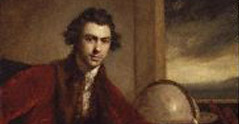|
CONGO MISSION ARCHIVES: The Papers of Bishop Ridsdale (1916-2000)
Missionary to the Eastern Congo
From the Henry Martyn Centre, Cambridge
Editorial Introduction by Dr S. E. Sutton, Archivist, Henry Martyn Centre
A Brief Life
Philip Ridsdale was born in 1916 and attended Harrow School and Trinity College, Cambridge. He joined the Church Missionary Society (CMS) in Western Uganda/Eastern Congo as a lay helper in 1938. Here he met and married his wife, Lucy, with whom he had five children. During World War II he served in the 7th Battalion King’s African Rifles. After being wounded in Burma in 1944/5, he returned to Cambridge and spent two years at Ridley Hall studying for the priesthood. In 1949 he and Lucy returned as CMS missionaries to Boga in the Eastern Congo. The following year they returned to Hoima where he was rural dean and schools’ supervisor in Bunyoro District, 1950-1955 and diocesan missioner in Ruwenzori Diocese, 1956-1960. He was created an Archdeacon in the Ruwenzori Diocese in 1961. Returning to England in 1964, he spent seven years as a vicar of the parish of Stapleford, Bramfield and Waterford in the Diocese of St. Albans before being made Rural Dean of Hertford in 1970. In 1971 Ridsdale went back to Boga, and was consecrated as the first bishop in 1972. He retired in 1980 and returned to Cambridge, where he founded the Congo Church Association, becoming General Commissary until 1992 and then Chairman. He was responsible for collecting together large numbers of papers relating to the Anglican Church in the Congo and these documents have been lodged with the Henry Martyn Centre since 2003. Bishop Ridsdale died in Cambridge on 14 June 2000.
The Anglican Church in the Congo
Before 1972 the Anglican Church was in the Diocese of Ruwenzori, Church of Uganda. In 1972 the Diocese of Boga-Zaire was created with Philip Ridsdale as its first Bishop. The original diocese, covering the Northern half of the Congo, comprised of one Archdeaconry of 30,000 Anglicans served by 12 priests. It was a huge area, very difficult to administer but, fortunately using one language; Zaire-Swahili. The diocese had three archdeaconries: Boga, Beni and Kisangani. In August 1975 Bezeleri Ndahura was consecrated Assistant Bishop and the diocese was divided into Boga-Zaire (containing Boga, Bunia, Irumu and Kisangani) with Ridsdale continuing as bishop and a new diocese of Bukavu comprising the Provinces of Kivu and Katanga (including Beni, Butembo, Goma, Bukavu, Kindu and the region of Shaba) with Ndahura as bishop. However the Diocese of Boga-Zaire was still vast; measuring some 1200 kilometres from Boga to the furthest point. Rapid expansion led in 1980 to the formation of the Diocese of Kisangani. This was a missionary diocese with limited resources. In the same year, Bishop Ridsdale returned to England and was succeeded by Bishop Njojo. In 1982 Bishop Diropka Balufuga was elected the second Diocesan Bishop of Bukavu with Assistant Bishop Kolini Mbona responsible for the area around Lubumbashi. Four years later the missionary Diocese of Shaba (later Katanga) was created with Kolini as its first bishop. Muzenda Musabaho, Archdacon of Goma, became the first bishop of the new Diocese of Nord Kivu in February 1992, based at Butembo. The Bukavu Diocese was further divided in 1997 with the establishment of the Diocese of Kindu under Bishop Masimango Katanda. The Francophone Province of Burundi, Rwanda and Zaire was instituted in May 1980 under Archbishop Bezaleri Ndahura, suceeded in 1981 by Bishop Justin Ndandali. In 1992 Zaire became a Province in its own right, with Njojo as the first Archbishop.
Dr. S.E Sutton
Archivist, Henry Martyn Centre
<back
|
|















